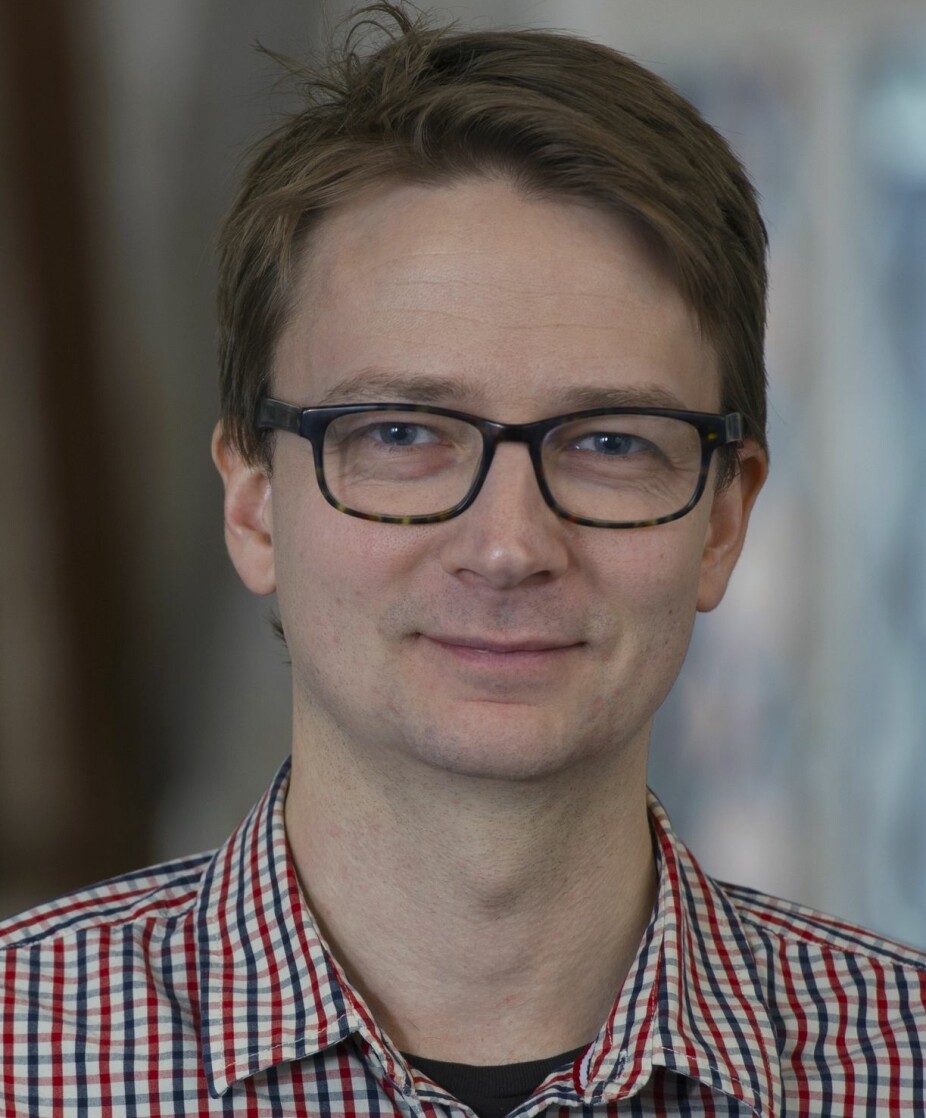
Problems with vision after a stroke often overlooked
Changes in vision may be a symptom of stroke, but this isn’t common knowledge. Stroke sufferers say that their vision problems aren’t given much focus during treatment, a new Norwegian study shows.
Many people who suffer a stroke notice changes in their vision, but don’t associate these changes with the stroke.
Patients say these vision problems are poorly identified and treated while they are in the hospital.
That’s according to a new study from Torgeir Solberg Mathisen, a PhD candidate at the University of South-Eastern Norway and his colleagues Helle Falkenberg, Grethe Eilertsen and Heidi Ormstad.
Poor vision can significantly reduce a person’s quality of life and come as an additional burden after a stroke. Stroke-related vision problems can make it difficult for people to read and increase their risk of falling and of depression.
“Vision problems as a result of stroke should be identified early on, because the consequences for the person with a stroke can be reduced the earlier measures are put in place,” Mathisen says to sciencenorway.no.
The study is part of Mathisen's doctoral dissertation and has been published in the journal BMC Health Services Research.
Weird, strange vision
The study consists of interviews with ten Norwegian patients who had vision problems in connection with a stroke.
Participants were asked about their experience with the health service's focus on vision problems as a result of stroke before, during and after their hospital stay.
Many said that they noticed that something was wrong with their vision before they were diagnosed with a stroke.

Their vision was "weird and strange", they said, but not so alarming that they immediately contacted a doctor or called 113, Norway’s national medical emergency number.
They also didn’t know beforehand that visual changes could be a sign of a stroke.
Stunned by GPs' lack of expertise
When their symptoms persisted, these patients contacted their GP and were examined by their GPs first. After the fact, some of the study participants said they were surprised that they were not sent directly to the hospital.
Many people questioned the competence of the GPs they contacted, based on their experience when they finally were admitted to the hospital. Patients were told by hospital staff that vision problems can be a symptom of stroke, and that quick action is important in improving outcomes.
The participants were recruited while they were being treated at stroke units at two Norwegian hospitals.
On average, the study participants were 73.4 years old, with a range from 70 to 90 years old. There were five women and five men. The interviews were conducted approximately three months after discharge.
Eyesight is affected in six out of ten
But how common are vision problems as a result of stroke?
As many as 60 per cent of people who have a stroke also have some sort of vision problem as a result, according to other studies from the University of South-Eastern Norway. This finding has been confirmed in recent studies from the UK.
“It may be that people’s vision is blurred, or that they have double vision, inattention to visual information, or that their peripheral vision disappears, also known as a missing visual field,” Mathisen said.
The most common loss of visual field is one-sided, meaning that peripheral vision has more or less disappeared on one side.
Many of these patients can still see well straight ahead, but the field of view from the middle to one of the person’s sides is missing in both eyes. This is a result of the way the vision centre is organized in the brain.
The visual centre in the brain interprets visual impressions. The right hemisphere interprets impressions from the left field of vision in both eyes.
If the visual centre in the right hemisphere is affected by a cerebral haemorrhage or cerebral infarction, it will cause loss of the left visual field. And vice versa.
Discovered by chance
Visual impairments associated with a stroke can be difficult to detect.
“The brain does its best to fill in a little for the lack of visual impressions,” Mathisen explains.
Many people discover their vision loss by chance, in that they are unable to read a book, for example. Or they bump into things because they can’t see that something is in the way.
These patients experienced their loss of mobility and orientation as having a severe negative impact on their quality of life. Many people also risk losing their driver's license if their vision is too impaired.
“It’s really important that stroke victims have their eyesight examined and not just their mobility. The doctor or hospital should have a vision exam on their checklist,” Mathisen said.
Random follow-up
The participants generally thought that their treatment was good. But they were dissatisfied with how their vision and visual function were examined and followed up on.
Some said that their vision problems were found just by coincidence, in that it was they themselves who noticed that they weren’t able to read or that they realized they hadn’t eaten the food from one side of their plate.
Many also found that there was no system for following up on their vision problems when they were discharged from the hospital.
“Few people were offered help with their vision or follow-up by the special health service,” Mathisen said.
The municipalities couldn’t help, either.
“Participants felt that they were only given a diagnosis of the problem without receiving guidance or rehabilitation afterwards,” he said.
The Norwegian Directorate of Health replies:
We asked senior adviser Liv Hege Kateraas at the Norwegian Directorate of Health if the focus on vision problems after a stroke in the health care system is inadequate.
"Vision and vision problems were key issues in the prioritization of topics for national recommendations when the Norwegian Directorate of Health revised the national guidelines for treatment and rehabilitation in stroke in 2017," she wrote in an email.
She said measures for visual rehabilitation have been highlighted and discussed with both clinicians and user representatives during the preparation of the revision.
In the current guidelines, published in 2017, it is recommended that:
• Visual function be assessed after a stroke, and patients with vision problems should be referred to an ophthalmologist, optician, orthoptist and/or vision educator.
• In stroke patients with visual field issues, treatment with compensatory measures is suggested.
This is an improvement based on insights from research from the 2010 guidelines, Kateraas said.
“Talk, smile, lift, see”
Many people who suffer a stroke do not understand that they have actually had a stroke.
The most common symptoms of stroke are slurred speech, a droopy face or difficulty moving an arm or leg.
The Norwegian Directorate of Health, in collaboration with several other professional groups, created the slogan "Talk, smile, raise your arm". The effort came after pressure from a group called LHL Hjerneslag, an interest group for people who have had a stroke.
The hope is that the individual or his or her relatives can recognize the early signs of stroke if the person has trouble talking, smiling or raising their arm.
But vision problems are a blind spot in that regard.
“This slogan should be expanded to ‘Problems talking, smiling, moving, seeing? Then you should call 113’,” says Mathisen.
According to the Norwegian Directorate of Health, sight was considered as a symptom during the design of the slogan. But the priority was to have as easy-to-understand message as possible to ensure that as many people as possible were able to comprehend and remember it, and then remember what to do next.
The message health officials ended up with, “If it’s difficult to talk, smile or raise your arm, it could be a stroke, call 113", “means that we can catch at least 4 out of 5 patients who are having a stroke,” Kateraas wrote.
The campaign has been evaluated several times and shows a clear effect, Kateraas said.
Translated by: Nancy Bazilchuk
Reference:
H. Falkenberg, T. S. Mathisen et al.: “Invisible” visual impairments. A qualitative study of stroke survivors’ experience of vision symptoms, health services and impact of visual impairments. BMC Health Services Research, 2020. https://doi.org/10.1186/s12913-020-05176-8
———
Read the Norwgian version of this article on forskning.no































